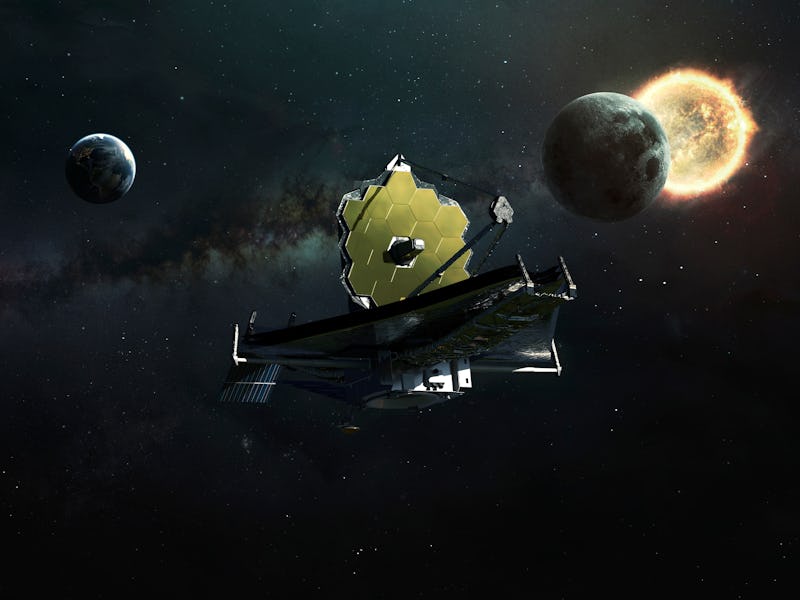NASA forges a new plan to protect the JWST from (tiny) existential threats
Welcome to the "micrometeoroid avoidance zone."

Starting next year, the James Webb Space Telescope will mostly schedule its observations to keep the telescope’s primary mirror pointed away from the direction in which it’s traveling. It’s basically the spacefaring equivalent of not pointing the telescope into the wind, and the goal is to keep micrometeoroids — tiny, fast-moving grains of space dust — from hitting the mirror head-on.
Webb’s engineers designed the telescope and its mirrors to withstand a steady pelting from micrometeoroids, but it took an unexpectedly hard hit in May 2022. The micrometeoroid happened to hit an especially sensitive spot on the mirror, and with more energy than engineers saw coming.
The impact prompted NASA to convene a group of optics and micrometeoroid experts, including representatives from the NASA Meteoroid Environment Office and the optics company that manufactured Webb’s mirrors. And that group recently announced a new plan, which focuses on pointing the telescope away from what’s called the “micrometeoroid avoidance zone.”
Webb’s mirrors were built to take a few dings, but NASA wants to keep them to a minimum.
How it works — Webb isn’t just parked in space; it’s orbiting the second Lagrange point, or L2, a location in space where the Earth’s gravity and the Sun’s gravity balance each other perfectly. One orbit around L2 takes about 6 months. And if a grain of space dust hits Webb’s mirror head-on, the impact will be twice as fast, and four times as hard, as it would be otherwise, according to NASA. That’s what happened in May.
To avoid that scenario, Webb’s scheduling team will try to ensure the telescope is pointing opposite the direction it’s moving most of the time. Webb can still observe the whole sky; it’s just going to be more cautious about when it looks in which direction.
“Astronomers will factor in the direction consideration when they write their cycle 2 proposals,” NASA Optical Telescope Element Manager for Webb, Lee Feinberg, tells Inverse.
But some science is time-sensitive, especially observations of things like supernovae or certain events in our own Solar System. In those cases, Webb will take its chances with the “avoidance zone” — for science.
What’s Next — So far, Webb has taken 14 measurable micrometeoroid hits on its primary mirror. That’s an average of one or two a month, which is roughly the rate engineers expected the telescope to face. And because the mirrors were designed with that bombardment in mind, none of those small impacts have hurt the telescope’s remarkable vision. May’s strike caused a slight optical error, but not enough to keep Webb from doing its job.
“Even after this event, our current optical performance is still twice as good as our requirements,” says Webb mission systems engineer Mike Menzel, in a statement.
And NASA intends to keep it that way.
“We think it could reduce the total number of big strikes (like the one in May) by roughly 30-40 percent over the lifetime though the actual number will be better understood in the future,” Feinberg says.
This article was originally published on